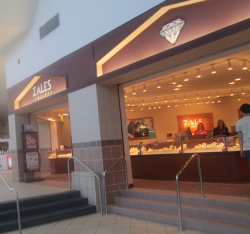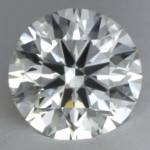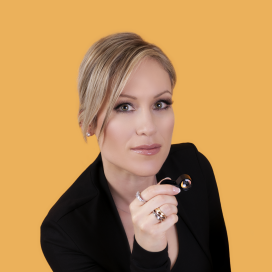Buyer Beware – Jewelry Appraisals Are Used As Marketing Tools
In 2005 Dateline NBC aired an expose on how diamonds are evaluated and sold entitled, ‘Diamonds, Is There Such A Thing As A Deal?” Has anything changed in the last ten years since the airing of this investigation?
http://www.nbcnews.com/id/8661995/ns/dateline_nbc/t/diamonds-there-such-thing-deal/#.Wyqbl6czpPZ
No Such Thing As A Diamond Certificate
When a consumer enters a brick and mortar jewelry store, meets up with a local diamond dealer, or shops online they are often told that the diamond is ‘certified’. Diamond certification is a misnomer and not an accurate term of what a gem lab report really is. Let’s take GIA for example. Their ‘diamond grading report’ or ‘Dossier’ are gem lab reports and never referred to as certificates. They are meant to be used as a thorough unbiased analysis of a gem material and are not a guarantee or valuation. You can clearly read this fine print for yourself at the bottom right hand corner of every GIA lab report.
AGSL (American Gemological Society Laboratory) is another fine lab often cited here on ODBA, but they too do not certify diamonds . Their reports have varying names depending on the specificity of information but all of these are referred to as diamond grading reports.
In fact, the only gem lab report that does serve as a legal document and is called a certificate is from HRD; a non-profit, Belgian governmental body affiliated to the university of Antwerp. They are the only diamond certification authority to have ISO 9002 accreditation and the diamond certificate serves as a legal document within the European Union. Outside of this entity, there are no diamond ‘certificates’ that serves as a legal verifying document.
So what consumers really need to understand is that diamond lab reports serve to describe a diamond’s many characteristics including: carat weight, clarity, color, basic cut proportions, fluorescence, and overall polish and symmetry. They are meant to be used for three primary purposes:
1. They confirm that a diamond is of the quality level that you are being asked to pay for
2. They help for verification purposes in cases where you need to get your jewelry repaired
3. Diamonds with respected lab reports are worth more and are thus easier to resell
However, as we already know that a diamond’s cut is the most important characteristic in a diamond (as it determines fire, brilliance and overall scintillation) it is important to know that a diamond lab report generally does not include information on a diamond’s make, performance, or precision (see diamond grading for more info). Hence the need for more transparent information in evaluating a diamond whether in-person or on the internet (for example, ideal-scope images, ASET images, and actual diamond magnified images).

Zales Jewelry Store (photo credit Random Retail on Flickr)
So, consumers are advised to make sure any loose diamond (or mounted diamond already set in ring/jewelry) that is .50ct or more, to have a respected gem lab report to fulfill the three reasons stated above but is NOT used for valuation or as a legal document. How then can a consumer ensure that what they are getting is in fact what is stated on the lab report?
As stated in NBC’s investigation, reliable and consistent gem labs are generally accurate with their results but there is a margin of variance (tolerance) that is acceptable within the industry. GIA and AGS are the most respected and consistent in their diamond evaluation and analysis while IGI (International Gemological Laboratory) is the most common lab report used for most mall based stores (Kays, Jared’s, Zales, Walmart, etc) but they are also found to be the most inconsistent. EGL (European Gemological Laboratory) has also been recently penalized for over-grading their diamonds to inflate price and have recently closed down their European branch because of this.
The NBC investigation shows gem lab ID cards provided by various labs with an associated dollar amount. Ten years later these cards are not used anymore but gem lab reports are available and when a purchase is made the jeweler often accompanies the purchase with a 3rd party appraisal. So although we moved away from the ID card, retailers are fundamentally doing the exact same thing only in a slightly different way. This accompanying appraisal is always more than what the consumer paid for the diamond jewelry. Therefore, consumers are led to believe that they are getting a significant cost savings on their jewelry. But how are retailers selling diamonds for less than what they are appraised for? The truth will surprise you.
Shameful Industry Marketing Gimmic?
As mentioned by Don Palmieri, President of the Gem Certification and Assurance Lab (GCAL) in New York and a Master Gemologist Appraiser with the American Society of Appraisers, “I think it’s probably one of the more shameful things in our industry…appraisals are used as marketing tools. You get a high appraisal you walk out thinking you just got the last great deal….you just got misinformed with that document.”
This does not mean that ALL jewelry appraisals are a marketing ploy? No. Just the ones provided free of charge from retail jewelers. Why do you need an appraisal in the first place? Well diamond and jewelry appraisals are used to confirm that the information on the grading report is accurate, if the stone is damaged, confirm that the diamond matches the grading report, etc. However, if you purchase a diamond that has either a GIA or AGS gem lab report most of this will be redundant and therefore the primary reason for getting an independent appraisal from an accredited jewelry appraiser is for insurance purposes.
Retail replacement value (or insurance replacement value) is an estimate of the appropriate funding that an insurance policy will pay out in case an item is lost, stolen, or damaged. Consumers may opt for private jewelry insurance or insuring their jewelry under a rider on their homeowners policy. As each insurance policy is different it is important to understand what the specific policy will cover (for example, cash/check or replace item). However, most policies require an updated independent appraisal every 3-5 years and therefore it’s advisable to pay the premium on the appraisal amount (not purchase amount as appreciation is generally about 5% per year). It is important to seek an independent appraisal instead of going with the retailer’s inflated appraisal because you don’t want to overpay your premium on an annual basis. As noted in the NBC expose, a woman paid $8,200 for her engagement ring, insured it for $15k, but was paid out only $8,900 because the policy stated that is what it would cost them to replace it.
Steps To Getting Your Diamond Engagement Ring Insured:
1. Ensure your retailer has an adequate return policy enough so that you can send your diamond or engagement ring to get appraised through an independent appraiser. The following are reputable appraisal organizations: International Society of Appraisers, American Gem Society, American Society of Appraisers, and National Association of Jewelery Appraisers
2. If you are happy with your appraisal, decide where you wish to insure your jewelry; a personal jewelry policy or a rider under your home owners insurance are common options
3. Make sure you get a new appraisal every 3-5 years (check your individual policy requirements) to account for inflation
Jewelry appraisals are used for getting the most value out of your insurance policy and therefore undervalued or overpriced jewelry will cost you if something should happen to the piece. Therefore, it is wise to seek independent and accredited appraisal services to insure yourself of any future mishap. Remember that all appraisals should be as specific as possible; including the retail store or branding of the diamond or jewelry to ensure that you get payment to replace like for like.
If you have any questions about a loose diamond or piece of jewelry and would like my opinion before purchasing, please feel free to contact me.
As always, Happy Diamond Buying!
Liz
Hey.You Want Ideal Cut Diamonds?
You've got it.
Join ODBA's Diamond Deal Friday and get handpicked diamonds every week from me to you.
No consultation required. Subscribe now!
ODBA Recommends
You May Also Like








